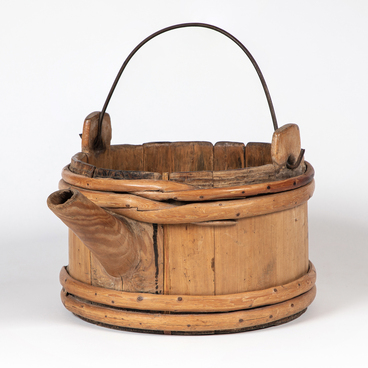The collection of the Sheltozero Veps Ethnographic Museum named after Rurik Petrovich Lonin features a grindstone — a stone used for manual sharpening of knives and other cutting tools. The object was donated to the museum by its founder Rurik Petrovich Lonin (1930–2009), a local historian, collector of Veps folklore, writer, Honored Cultural Worker of the Republic of Karelia.
The development of stone deposits on the Veps territory in the Prionezhye region began several hundred years ago. The Brusno grindstone deposit was the first to be developed. Peasants from the village of Vehruchey of Sheltozersko-Berezhnaya volost, Petrozavodsk county were engaged in the production of grindstones from Brusno sandstone. The fragments of the Brusno stone (sandstone) were found on the island of Brusno, half a kilometer from the western shore of Lake Onega, as well as on the neighboring shores — they belonged to the local church of the Brusno parish.
Stone mining was carried out with wedges and crowbars in the direction of the layers, which helped to conveniently break the stone. The Brusno stone quarry was rented by local peasants, who mined up to 10 tons a year. Up to 5,000 round grindstones were produced per year. In addition, bars for knife sharpening, slabs for floors and steps, and millstones were made. Grindstones and bars were sold in Petrozavodsk at the Petrovsky Fair on June 29 and at fairs in Oshta, Lodeynopolsky district, as well as in the city of Vytegra. The stone-grinding work became most widespread when Peter the Great launched the construction of arms plants.


